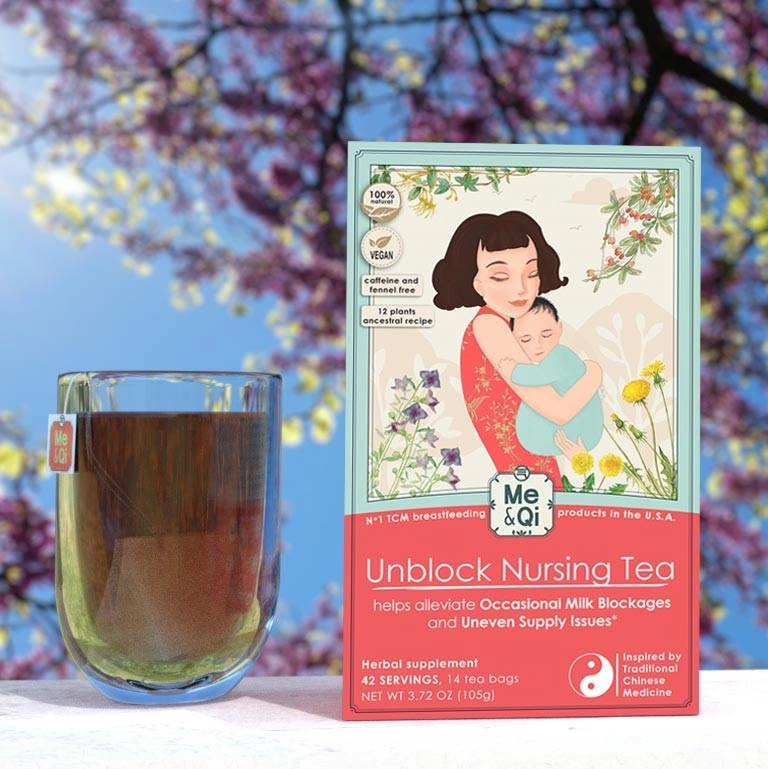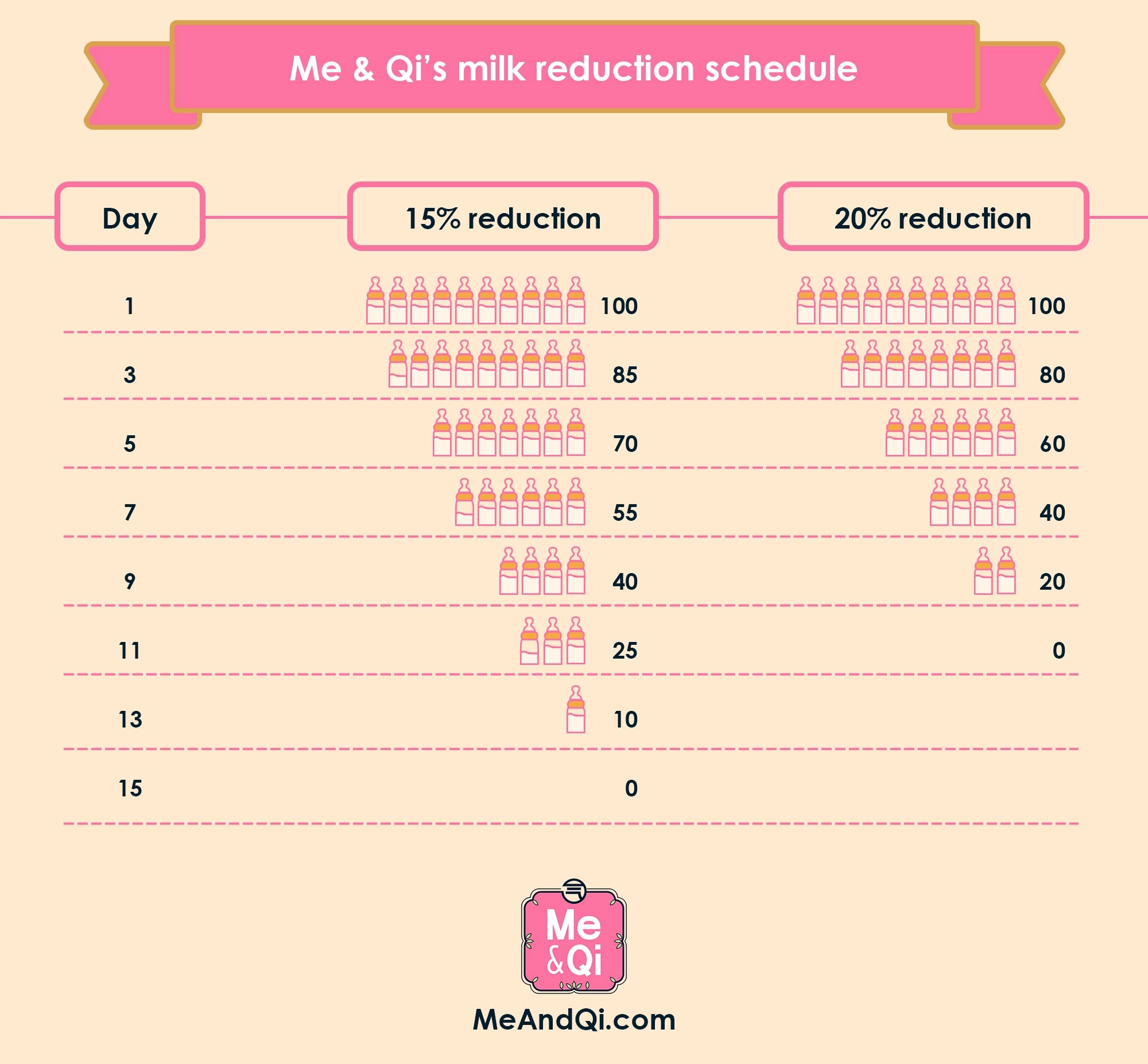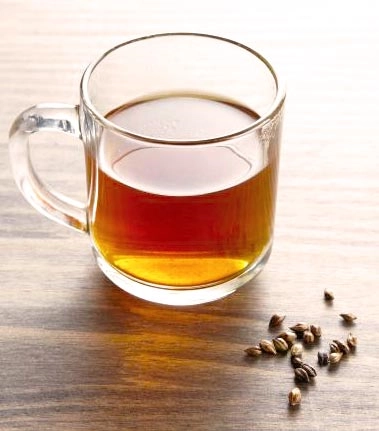Contents
- Precautions to take before you stop milk production
- Drying up your milk using the supply & demand equilibrium concept
- How long does it take to dry up your milk supply?
- If you are to reduce step by step, how big should each step be?
- How do I apply this volume reduction in practice?
- Avoiding engorgement and plugged ducts while you stop milk production
- Foods and herbs that help stop milk production
That's it, you're at the end of a journey. You've decided you should stop producing milk.
Like billions of women before you, you're wondering how to concretely go about it. Is there anything you should worry about? Are there any tips and tricks that could help you dry up your supply painlessly? We try to give you an overview of everything you should think about when stopping your breast milk production.
Precautions to take before you stop milk production
The most important thing to think about is, of course, your baby. Is she/he still used to your breastmilk? If so, have you stored enough in the freezer to continue feeding him until she/he's weaned off your milk?
If your baby has never eaten from a bottle before, have you tried feeding them from a bottle yet? Many babies who've been exclusively breastfed will have a hard time accepting bottles at first. It's a learning process you want to make sure you've done before you dry up your breast milk.
If your plan is to feed formula to your baby after you've stopped producing milk, have you made sure your baby accepts the formula you plan on giving? It's a good idea to use your baby to the formula so they don't miss your breastmilk. If that's your case, it is highly recommended to have a migration period where you feed both breast milk and formula to your baby.
Last but not least, especially if you've already had painful engorged breasts and clogged ducts in the past, it's important to be aware you will likely face those issues again while drying up your breast milk. About 80% of nursing mums do so it's incredibly common.
One precaution you could take is buy a tea like Unblock Nursing Tea before you start the drying up process. It's an herbal tea made of 12 natural herbs that's designed to prevent engorged breasts and clogged ducts.
Drinking it every day while you stop milk production should help you avoid engorgement, plugged ducts or, worse, mastitis (a painful infection of the breasts).

Drying up your milk using the supply & demand equilibrium concept
The breastfeeding supply and demand equilibrium concept may sound like a complicated term but the concept is simple. It refers to the fact that if you breastfeed or pump less, your body will get the message and produce less milk. In short, your milk supply follows the demand: less demand, less supply. Making use of this is the best way to dry up your supply.
Of course, as with anything, terms and conditions apply. You cannot just stop breastfeeding or pumping from one day to the next and expect your supply to dry up painlessly. If you do so, you'll be in a world of pain from engorgement, plugged ducts and, maybe, mastitis. To stop your milk production, you need to do so gradually. We recommend the following schedule:

Click on the image to make it bigger
How long does it take to dry up your milk supply?
As you can see on the above schedule, we recommend you gradually reduce your supply in 15% or, maximum, 20% steps. Each step should last 2 days, that's the minimum amount of time required for your body to get used to the lower milk production. To be on the safe side, you could even lengthen this to 3 days per step.
With this method you're looking at 15 days to stop your milk production if you take 15% steps or about 11 days if you take 20% steps.
If you are to reduce step by step, how big should each step be?
Concretely, what do we mean by "15% reduction step" or "20% reduction step"? It means that, starting from the base volume of milk you were expressing each day, you need to express 15% or 20% less milk.
For instance if you were expressing 20 oz (590 ml) of breast milk a day and you choose to go for 15% steps, 15% of 20 is 3. This means that in each step you need to express 3 oz (90 ml) less. In the first step you should therefore reduce to 17 oz (500 ml) a day, then 14 oz (410 ml) a day in the second step, and so on and so forth.
How do I apply this volume reduction in practice?
There are two ways you can go about reducing your milk supply. The first way is to keep the same pumping frequency but express less milk each time. This obviously doesn't work if you breastfeed, you can't just stop your little one mid-feeding!
The second way, and probably the most practical, is to gradually reduce the amount of times you breastfeed/pump. For instance if you were breastfeeding/pumping 5 times a day and choose to go for 20% steps, you can breastfeed/pump one less time each step (since 20% of 5 is 1).
Avoiding engorgement and plugged ducts while you stop milk production
The biggest risk you face when you stop milk production is getting engorged breasts, clogged ducts or, worse, mastitis. Engorgement refer to your breasts feeling extremely full, distended, painful and, often, warm to the touch. Plugged ducts is when the issue is more localized: it's typically a swollen red spot on one of your breasts (or both) that is often painful to the touch. Those issues can be very painful and, if left untreated, can degenerate into full-blown mastitis, an infection of the breasts.
Those issues are caused by an accumulation of unexpressed milk in your breasts, which is exactly what you're going to have as you decrease milk production, hence the importance to go in small steps. You're particularly vulnerable to engorged breasts and clogged ducts if you've had those issues in the past.
A great way to minimize the risks to get engorged breasts and/or clogged ducts while you reduce your milk supply is to drink Unblock Nursing Tea during the whole process. It's an herbal tea made of 12 natural herbs that's designed to help fight off engorged breasts and clogged ducts.
It contains ingredients such a Honeysuckle flowers, famous for their anti-inflammatory properties or Angelica roots, which are known to reduce lumps and swellings.
We advise you start drinking it a couple of days before you start the process and keep drinking it throughout until your milk production has totally stopped.
Foods and herbs that help stop milk production
While the breastfeeding supply & demand equilibrium concept, as explained above, will on its own be enough to stop your milk production, you can help yourself by eating food or drinking herbal infusions that help reduce milk supply.

Below is a list of foods and drinks thought to reduce milk supply:
- Drinks: Barley tea, Green tea
- Meats: Crab
- Herbs: American ginseng, Star anise, Fried malt, Purslane
- Sweets: Chocolate
- Fruits: Tangerines, Olives, Hawthorn berries
- Vegetables: Cucumbers, Winter melons, Bitter gourds, Sweet potatoes, Carrots, Mushrooms, Corn, White radishes, Eggplants, Bamboo shoots
Obviously all mothers are different. Some nursing mums can spend their day eating chocolate and drinking barley tea and see no impact on their supply. Or on the contrary it can have a massive effect on them. These foods and drinks generally help but again should be there as a support, not as your main method to decrease your supply.

